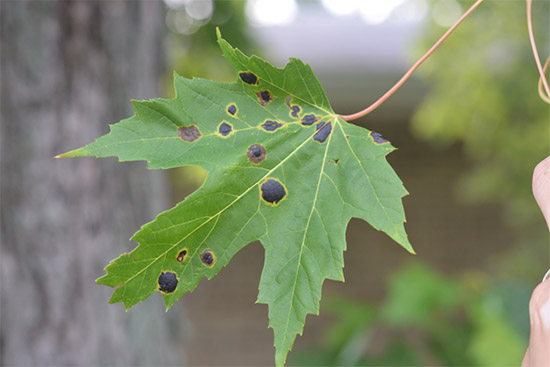Issue 15, September 11, 2017
Tar Spots of Maple
Tar spots have been evident on many species of maple this year. Several different fungi in the genus Rhytisma cause this disease. Tar spots result in raised, black spots to on upper leaf surfaces. The symptoms are distinct, allowing for and easy diagnosis. Affected leaves appear as if they splattered with tar, hence the name Tar Spot.

Tar Spot on Silver Maple
The first symptoms appear in mid-June as small, pale yellow spots. By mid-July the yellow spots expand and a thick, raised, black stromata forms within the spot. By September, spots truly look like tar and often have a wavy or rippled surface. If severe, the disease may cause some minor defoliation, but will not significantly influence tree growth and development.
The fungi that cause tar spots overwinter on infected leaves. In the spring, overwintering fruiting bodies ripen and eject spores. Wind carries the spores to nearby developing leaves of susceptible hosts. First symptoms appear 1-2 months following the initial infection.
Outbreaks of this disease are relatively infrequent. Moist, sheltered locations allow the pathogen to easily survive the winter. Trees grown in these locations may be repeatedly infected. The most effective management practice for a home landscape is to rake and destroy leaves in the fall. This practice will help reduce inoculum capable of causing infections the following spring. Fungicides can be used to protect newly developing leaves, but are not warranted. (Travis Cleveland)
Author:
Travis Cleveland